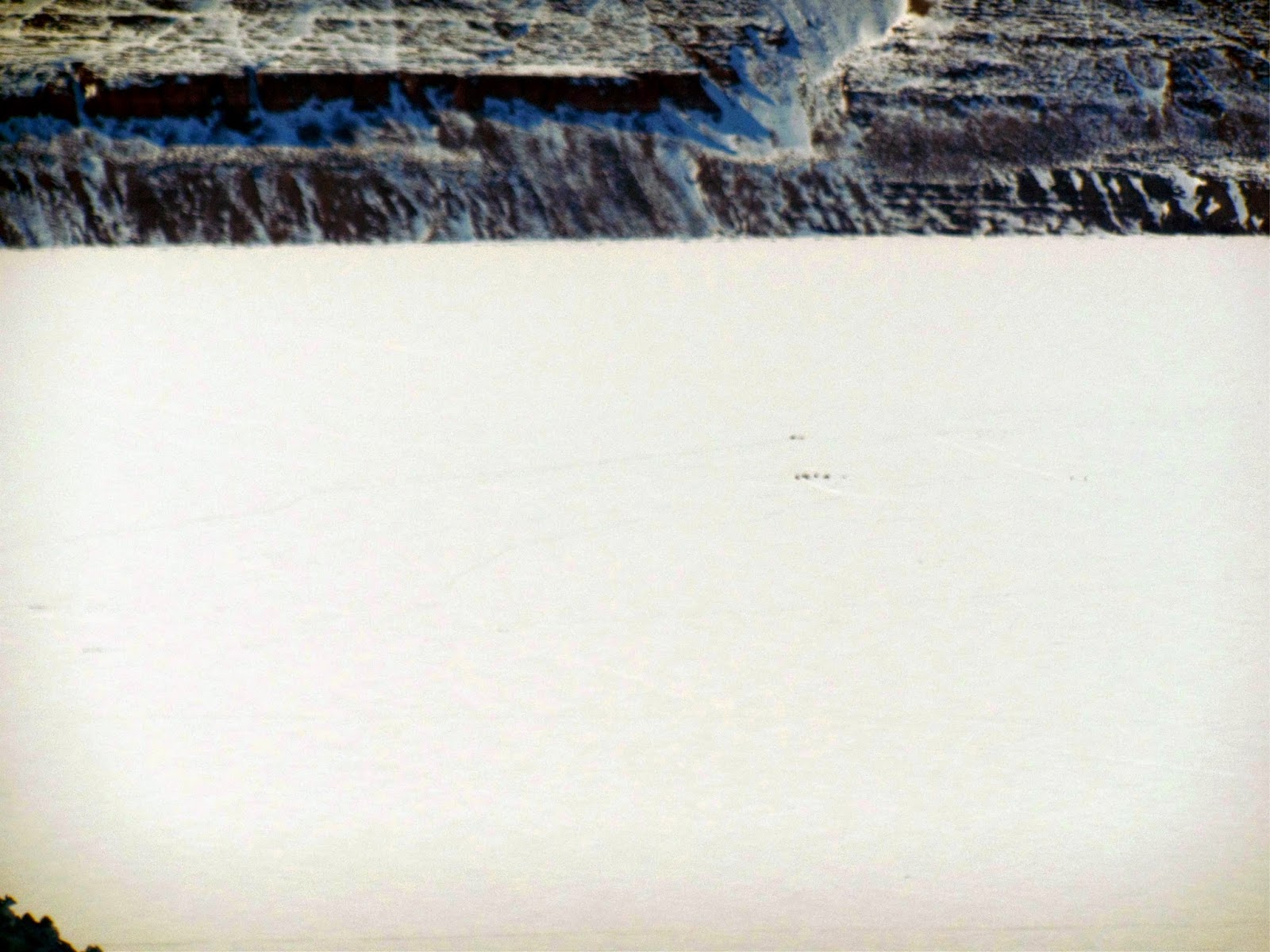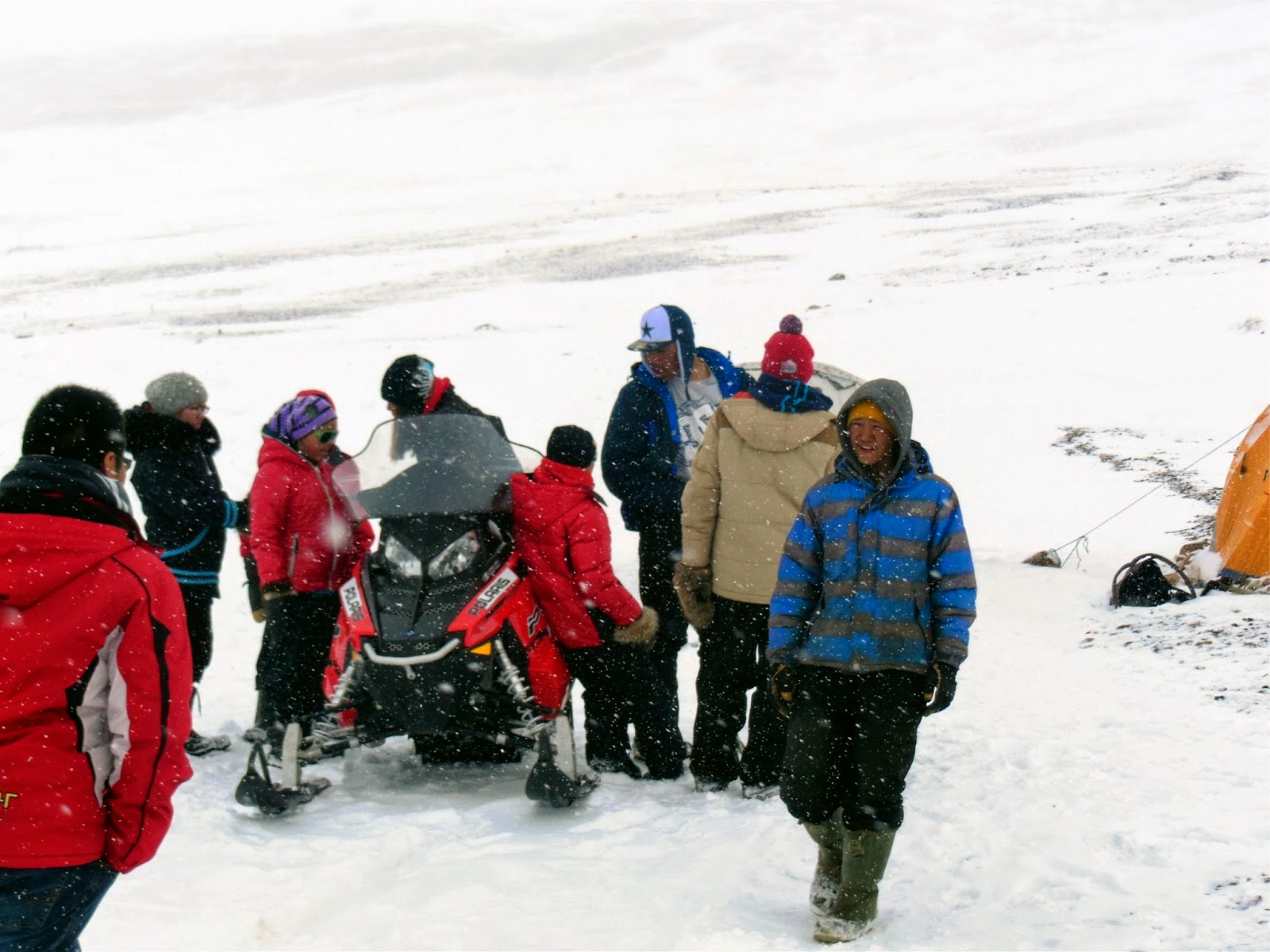The
last day of the 2013-14 academic year was June 5. A ceremony was held in the school's gym to
commemorate the occasion and congratulate the students for their academic
achievements. As parents & elders
filed into the gym alongside teachers & students, it was easy to notice a
large colourful arch at the front. The
decoration was made by the school's kindergarten teacher, Abby, because her
students were graduating to Grade 1. The
arch would serve as a great background for pictures.
The
kindergrad began at 1:30pm with an opening address by Abby. She then called upon each of her students to
receive a certificate and pose for a picture.
All the kindergarteners were formally dressed for the event. Many parents rushed to the front to snap
pictures of their children using cameras, iPods, and iPads.
 |
| Dane addressing Inuujaq School before receiving his gift. |
The
assembly continued with the presentation of gifts to the four southern teachers (Dane, Coreen, Sean, Amber) and one Inuit teacher (Marleen) who were leaving their positions to pursue other job opportunities in & outside of the community. A sixth teacher was taking a year
off for educational purposes but would return. The
principal summoned each teacher to the front to receive their gift, say a few
words to the audience, and receive an applause for all their hard work.
 |
| Grade 1 perfect attenders. |
 |
| Middle school perfect attenders. |
The
third and last segment of the assembly was the attendance awards for the month
of May. I was "drafted" to take
pictures of the lucky K-12 students who received a certificate. Their names were cast into a
large draw that contained the names of perfect attenders from the previous
months. A name would be chosen from the elementary,
middle, and high school grades. The
three chosen students would be awarded a brand new bike. Three times the audience fell silent as a
name was drawn, and three times they cheered when the winner was announced. The winners were surprised but overjoyed to
hear their names over the speakers.
 |
| Eunice leads everyone in a cheer after announcing the first winner. |
At
the end of the ceremony, everyone headed outside for the year-end BBQ. It was a little windy, so everyone had to hold
on to their food. There were hot dogs,
hamburgers, juice and later on, deep fried hot dogs wrapped in bannock. The bannock wrapped hot dogs were prepared by
elders using Coleman stoves. The stoves
were placed behind a row of tables so that the wind wouldn't blow out the fires. It was my first time having these types of hot
dogs and they were delicious. Everyone
was dismissed when the BBQ area was clean and all the appliances & utensils
were put away.
The
high school students were looking forward to the summer months, having made plans to
go camping, hunting, visit relatives in other communities, and/or just hang out
with friends. Many had asked if I was
coming back next year, to which I replied, "yes." As for me, I would be travelling down south for the
summer to visit family & friends, and to enjoy the hot weather.
I spent
the weekend of June 7 & 8 deciding what to pack for my summer trip. Monday, June 9 was the last day for Inuujaq
School staff and the day was spent cleaning classrooms, staff room, putting
orders in for next year, and returning keys.
I flew out of Arctic Bay on June 10.
As
I continue to enjoy summer vacation at the time of this writing, I can't wait
to see what new challenges await in early August. So far, I know that six new teachers will be
joining the staff and I will be the Nunavut Teacher's Association (NTA)
Representative (Rep) for the school (think union rep). I'm sure the first issue to be talked about
is the new contract the union recently signed with the Government of Nunavut in
May.
Until
then, I'll be taking a break from my blogging duties.
See
you all in mid August!
 |
| June 9, 2014 |












































